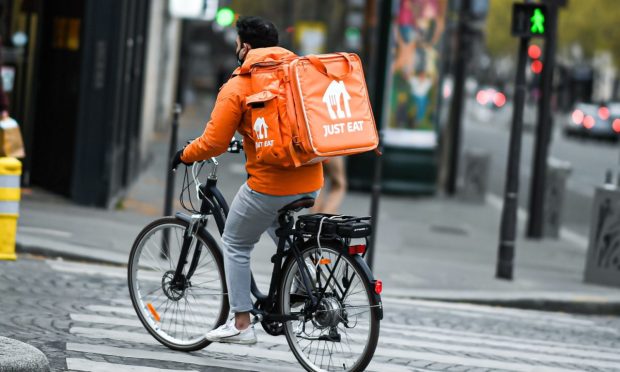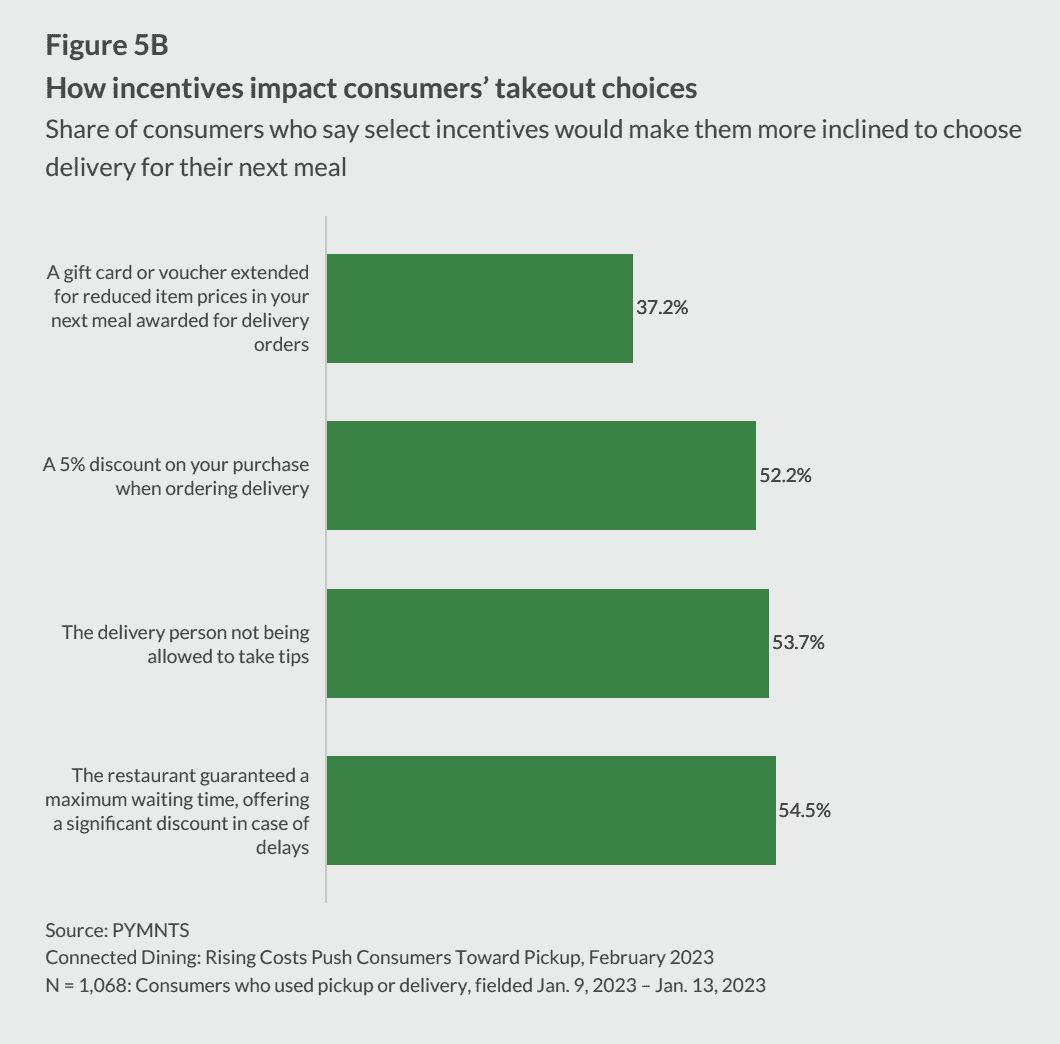Half of Restaurant Customers Skip Delivery to Avoid Tipping

PYMNTS research shows tipping might be that one cost too many for restaurant delivery customers.
By the Numbers
According to data from PYMNTS’ study, “Connected Dining: Rising Costs Push Consumers Toward Pickup,” which drew from a survey of more than 2,100 U.S. consumers in January, 54% of consumers who order from restaurants for off-premise consumption said they would be more inclined to order delivery for their next meal if the delivery person were not allowed to take tips.

But Is It Possible?
Given that delivery workers typically depend on tips, such a policy would require restaurants or third-party delivery services to find a way to pay couriers more, an unlikely change given that even firms that had switched to a full-time employment model, such as Just Eat U.K., have been shifting back to a gig worker model, laying off employed drivers. With the notoriously thin margins of food delivery, it seems unlikely that restaurants or third-party players would begin springing for higher pay for couriers.
As such, for tip-free delivery to be possible, it might depend on automated technologies such as drones and sidewalk rover robots.
Drone delivery firm Flyby Robotics announced Wednesday (April 5) the close of a $4 million pre-seed funding round and the launch of its pilot, delivering smoothies, salads, sushi and other foods and beverages, charging consumers a $3 delivery fee.
Flytrex, a drone delivery service that has partnered with major companies including Chili’s parent Brinker International and consumer packaged goods (CPG) giant Unilever, has been seeing high loyalty levels a year into its first test in Holly Springs, North Carolina, as co-founder and CEO Yariv Bash noted in an interview with PYMNTS.
“In Holly Springs, the first town we started operating in, a year after, we’ve managed to penetrate close to 60% of the households within range, so that means more than half the households downloaded the app and made at least one order,” Bash said in February. “One year after we started, we’re at roughly 50% retention — 50% of the households keep using the service. If you compare that to any other on-demand service, it’s exceptionally great.”

